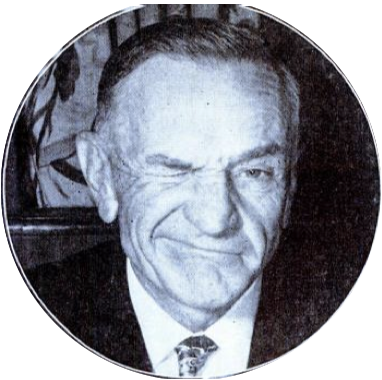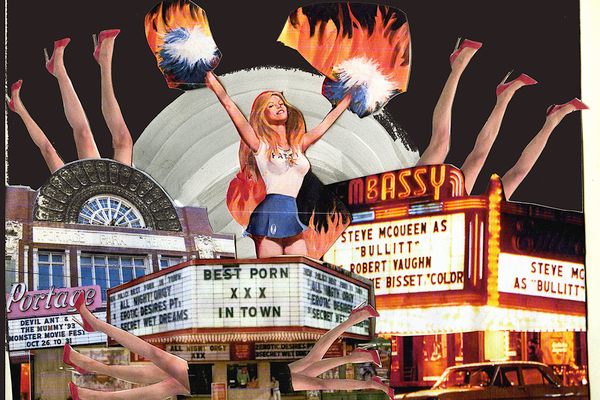How Miracle Max Nearly Shut Down ‘The Princess Bride’

Miracle Max was a miracle unto himself. (Image: Youtube)
Creating a scene-stealing character takes a special alchemy of performance, direction, and artistic license that isn’t easy to predict or replicate. It’s not just good casting or writing; it’s good everything.
Such was the case with Miracle Max in The Princess Bride.
In case there is someone left who has never seen it, the 1987 fantasy film follows the swashbuckling adventures of the farmhand-cum-pirate Westley (Cary Elwes) and his true love, Princess Buttercup (Robin Wright). Along the way they encounter all sorts of unforgettable characters like revenge-driven swordsman, Inigo Montoya (Mandy Patinkin), gentle giant Fezzik (Andre the Giant), and loquacious gang boss Vizzini (Wallace Shawn). But it is Billy Crystal’s Miracle Max, onscreen for less than five minutes, who has become one of the favorite characters of all.
Miracle Max is a crooked old healer who lives in a hovel in the woods. Late in the film, Inigo and Fezzik bring a near-death Westley to him to be brought back to life. While the character only has about five minutes of screentime, Crystal, under heavy prosthetics, turned in a performance that was so uproarious that it almost literally left some of the cast in stitches.
As Crystal tells the short 2001 oral history of the movie, As You Wish: The Story of the Princess Bride, the story of Miracle Max on film began when director Rob Reiner forced Crystal to read the William Goldman book (yes, The Princess Bride is a book!) before the movie began filming. After Reiner got Crystal to sign on to the movie as Miracle Max, the director paired him with make-up artist Peter Montagna, who Crystal had worked with previously on Saturday Night Live. Even from the earliest stages of developing the character, Crystal began making it his own, bringing a pair of reference photos to Montagna to help him get the look just right. One was an image of early 20th century baseball manager Casey Stengel, and the other was a picture of Crystal’s grandmother. From these two images the iconically gnomish features of Miracle Max were sculpted.

Casey Stengel (Image: Wikipedia)
Once it came time to actually film, Crystal had a script, but it didn’t really seem to matter to him. As Elwes tells it in his book, As You Wish: Inconceivable Tales from the Making of The Princess Bride (not to be confused with the previously mentioned documentary), Crystal started riffing from moment one:
“From the first shot in which cantankerous Max appears, poking his head through a wooden peephole in the door (very much like the doorman who greets Dorothy when she and her friends reach Oz), he began ad-libbing.”
Reiner wanted the scenes with Max to be outrageous and Crystal didn’t disappoint. In an interview included with a later edition of the movie, the director says that the part of Miracle Max was written in a voice similar to the classic Mel Brooks character, The 2,000 Year Old Man (a bit that he performed with Rob Reiner’s father, Carl Reiner). Brooks’ was a crotchety, kvetching Jewish caricature in the old Catskills tradition, and Crystal had no problem leaning into the part. “I had relatives like him,” he says in the documentary.

Rob Reiner directs Billy Crystal and Carol Kane before excusing himself to laugh. (Image: Youtube)
Over just three days of shooting in the tightly packed set of Max’s hovel, Crystal’s performance managed to nearly shut down the production. Given pretty much free reign by Reiner, Crystal became a show-stopping gag factory. In his book, Elwes remembers, “For three days straight and ten hours a day, Billy improvised thirteenth-century period jokes, never saying the same thing or the same line twice.”
Most of the manic energy and “medieval stand-up,” like the classic MLT sandwich line (mutton, lettuce, tomato), made it to the screen, but Crystal came up with some racier lines that had to be cut. One deleted scene includes the line “Never rush me. I had a very rough night. I found my oldest nephew with a sheep.”
In another deleted scene, Crystal can be seen mugging for the camera, sparking hooting laughter from the cast and crew out of view. This actually became a pretty big problem as reactions to Crystal’s ad-libs kept ruining the sound during takes. Reiner himself eventually had to leave the set and watch the takes from a monitor because he couldn’t keep from bursting into loud laughter. Even more troublesome was Elwes, who had to lay stock still on a table in Max’s hovel, hovering near death. Crystal was so funny that Elwes couldn’t contain himself either, and had to be replaced with a dummy in some shots.
Only Patinkin was able to keep a straight face for the shots, but it cost him. As he says in Elwes’ book, he was clenching so hard to keep from laughing that he actually bruised a rib.
It should also be noted that Max’s scenes would not have been half as memorable and funny were it not for actress Carol Kane who played opposite Crystal as his shrieking harridan of a wife, Valerie. Nearly unrecognizable under her prosthetics, Kane held her own against Crystal’s onslaught. In a movie brimming with catchphrases (“as you wish,” “you killed my father, prepare to die,” etc.), the real miracle behind Miracle Max is that he is remembered at all.









Follow us on Twitter to get the latest on the world's hidden wonders.
Like us on Facebook to get the latest on the world's hidden wonders.
Follow us on Twitter Like us on Facebook